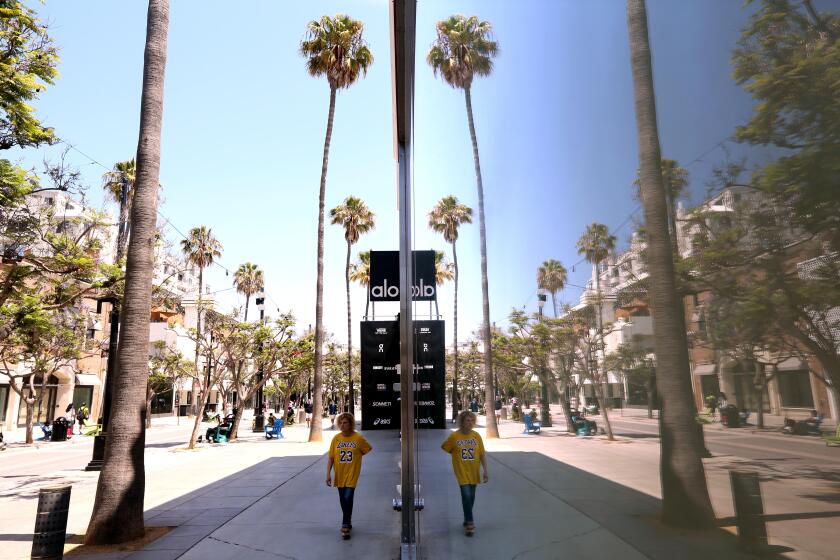A harbor for expatriates
This bustling port was supposed to be just a whistle-stop for Lana and Joe Reid. The San Jose retirees were en route to the tourist hotbed of Puerto Vallarta, where they were planning to buy a home near the water.
But their detour through Mazatlan turned out to be a date with destiny. They were drawn to the street life of the historic downtown. They strolled the oceanfront walkway known as the malecon. They watched the fishing fleets skipping across the bay to the seafood canneries. They liked the cultural amenities, such as the restored 19th century theater, and the good healthcare and other services available in this industrious city of 400,000.
“Puerto Vallarta was not the working . . . city we found here in Mazatlan,” said Lana Reid, 60. The couple bought a $230,000, three-bedroom penthouse in a high-rise condo on the malecon in 2004 and haven’t given Puerto Vallarta, 275 miles to the south, another thought. Long the bridesmaid of beach communities in Mexico, Mazatlan is starting to turn the heads of American retirees and vacation-home buyers. They’re finding they can get more for their money than in better-known resort areas. And they’re getting a chance to live in a mid-size, “authentic” Mexican city, rather than purely a tourist hub.
An estimated 3,500 to 7,000 mostly U.S. and Canadian expatriates call Mazatlan home. They are restoring old properties in the city center, building palaces on the hills overlooking the bay and buying homes on golf courses. Developers are building a marina and luxury condos, some selling for more than $750,000. Not even the area’s ferocious summer heat and Sinaloa state’s reputation as a stronghold for drug cartels is deterring the flow.
“All of a sudden, these companies saw affordable beachfront property and they zoomed in here,” said real estate agent Carol Sinclair, a Canadian native who has lived in Mazatlan for 23 years.
Government officials are courting well-heeled retirees and upscale developments. Property values are rising fast. The changes irk those who like the city’s unvarnished edges.
“The old hippies are having issues,” said Tony Feuer, 60, a ponytailed Bay Area expat who owns an inn near the city’s lively Plazuela Machado, a refurbished square ringed with cafes. Feuer says modest homes that would have fetched $50,000 five years ago now sell for triple that. After 5 1/2 years in the city, he’s planning his escape to a more rural, affordable area of Mexico in a few years.
Foreign influence is nothing new for Mazatlan. Founded in 1531 by a Spanish conquistador, Mazatlan became a port for exporting gold and silver from nearby mines. U.S. and European investors helped transform the city into an industrial hub in the late 1800s.
Their legacy can be seen in the European architecture of the historic center and heard in the region’s signature banda music, whose oompah beats fuse polka with mariachi brass. Foreign tourists have been coming since the 1950s. Cruise ships dock regularly at the harbor. U.S. and Canadian snowbirds flock here during the winter. The city hosts one of the largest Mardi Gras celebrations in the hemisphere.
Still, tourism doesn’t dominate Mazatlan’s economy the way it does in Cancun or Cabo San Lucas.
The vibrant mix captivated Texans Bill and Jacque Demmer, who built their first house in the city in 1983. Jacque, 59, is active in an expat group that raises funds for local schools. Bill’s passion is the modern home they’re building on Icebox Hill overlooking the bay.
A former developer, the 75-year-old said the structure -- with jaw-dropping views, an elevator and a bridge connecting the front of the home to the back -- was one of the most complicated projects he had ever taken on. He spent a recent morning chasing down his cabinetmaker, who is weeks behind.
“It’s one of the things I still can’t get used to,” Demmer said of the culture’s liberal interpretation of deadlines.
Other expats, though, are reveling at being off the clock.
Larry Lambert’s road to Damascus turned out to be Mazatlan’s malecon, where the vacationing Idaho workaholic underwent a conversion last year. Something about the warm sea air and the gracious local people ripped open the buttoned-down engineer. Upon his return to Boise, he quit his job, pierced his ear, packed what would fit into a 5-by-8-foot U-haul trailer and headed back to Mazatlan within months.
He and partner Pattie Wells bought an $80,000 home last fall in a neighborhood filled with businesses that local families operate out of their living rooms, including a piñata store, a tailor shop, appliance repair and a taco stand.
The old Lambert might have griped about the lack of zoning. The new Lambert doesn’t give a hoot. He and Wells take Spanish classes and find joy in shopping for fresh vegetables or chatting with neighbors.
“My new philosophy is that if we get one thing done today, it’s a good day,” said Lambert, 63. “If not, there’s always mañana.”
The Reids say Mexico has changed them as well. They are learning Spanish and have found it eye-opening to view issues such as immigration and drug trafficking from Mexico’s side of the border.
As for healthcare, Joe Reid said the treatment in Mazatlan was the best of his life. He said his English-speaking doctor had inquired more deeply into his history than any in the states. A stomach ailment put Joe in the hospital for a few hours, where he received antibiotics, tests and close attention from a doctor and a nurse. The bill: $100.
Lana said living abroad had, paradoxically, brought their family closer. Hurried visits in the states with their children and grandkids have been replaced by leisurely vacations and detailed e-mails.
The couple celebrate the close of almost every day by watching the sunset.
“We never want to take this for granted,” Lana said.
More to Read
Inside the business of entertainment
The Wide Shot brings you news, analysis and insights on everything from streaming wars to production — and what it all means for the future.
You may occasionally receive promotional content from the Los Angeles Times.










